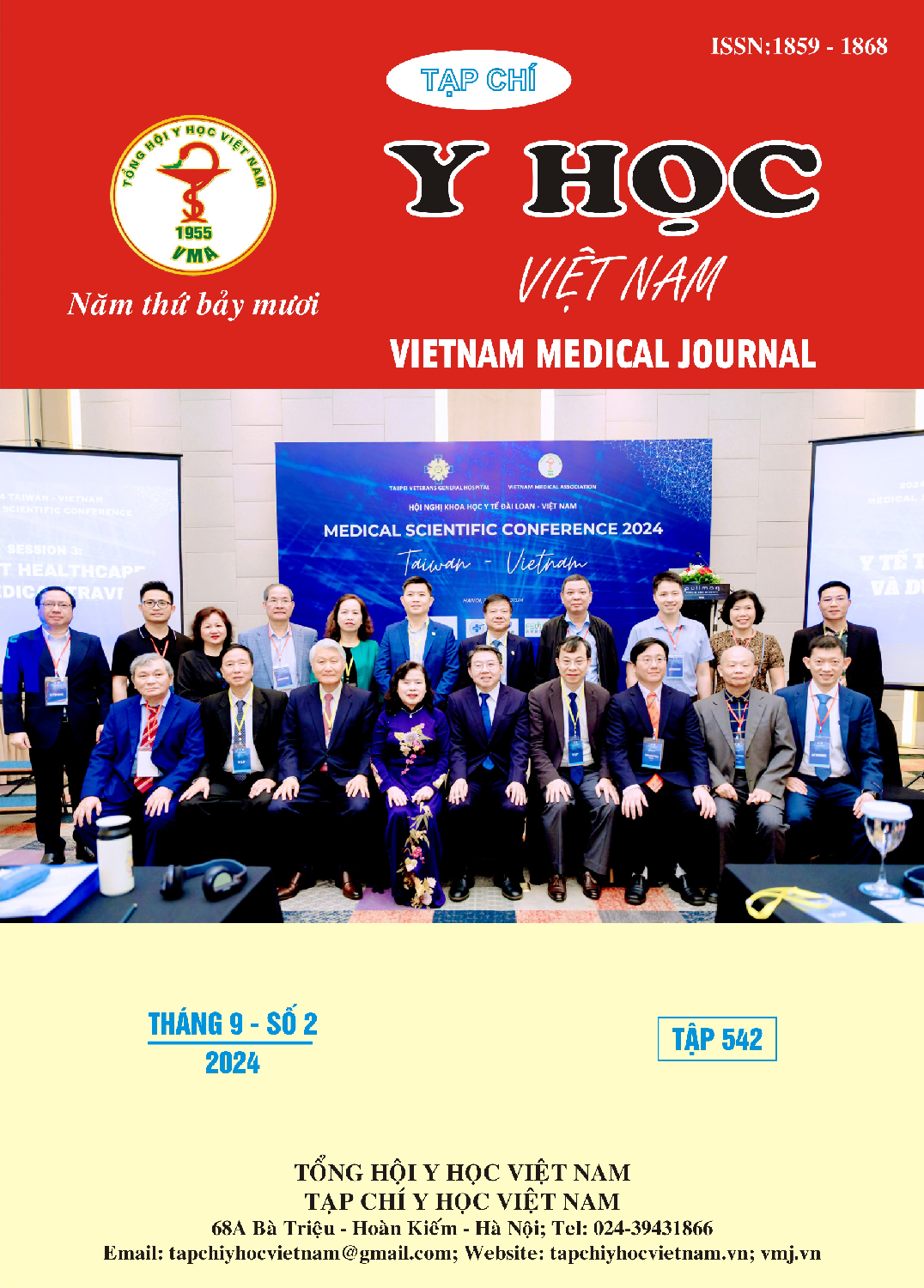FACTORS INFLUENCING THE LIVE BIRTH RATE IN IVF AT NATIONAL HOSPITAL OF OBSTETRICS AND GYNECOLOGY IN 2019 – 2020
Main Article Content
Abstract
Objective: Evaluating factors influencing the live birth rate in IVF at the National Hospital of Obstetrics and Gynecology in 2019 – 2020. Subjects and study methods: Cross-sectional retrospective study, collecting medical records of patients undergoing IVF at the National Fertility Center, Central Obstetrics Hospital from October 2019 to December 2020. Results: The live birth rate was 40.3%, the rate of failed cases was 59.7%. The live birth rate in the group with maternal age < 35 is 80.1%, and > 35 is 19.9%. The live birth rates in patient groups with low, medium and high AMH were 4.7%, 15.6% and 20.0%, respectively. In addition, the live birth rate in the group of patients with fresh embryo transfer was 27.4%, in the group of patients with frozen embryo transfer it was 48.1%. Conclusions: There are relationship between factors in IVF and live birth rate, including: Maternal age under 35 years old was higher than that of over 35 years old; The live birth rate was highest in the group of patients with high AMH levels; and the live birth rate of frozen embryo transfer is 2.4 times higher than that of fresh embryo transfer.
Article Details
Keywords
IVF, live birth rate
References
2. Nguyễn Viết Tiến, Đào Xuân Hiền. Nhận xét một số yếu tố liên quan đến tỷ lệ có thai của phương pháp bơm tinh trùng vào buồng tử cung tại Bệnh Viện Phụ Sản Trung Ương. Luận văn thạc sĩ, Trường đại học Y Hà Nội. 2009.
3. Hồ Mạnh Tường, Đặng Quang Vinh, Vương Thị Ngọc Lan, và cs. Thụ tinh trong ống nghiệm, Nhà xuất bản tổng hợp Thành Phố HCM. 2020; 17-19.
4. Aflatoonian A, Mansoori Moghaddam F, Mashayekhy M et al. Comparison of early pregnancy and neonatal outcomes after frozen and fresh embryo transfer in ART cycles. J Assist Reprod Genet. 2010; 27 (12): 695-700.
5. Pan Y, et al. Major factors affecting the live birth rate after frozen embryo transfer among young women. Frontiers in medicine. 2020; 7:94.
6. Saket Z., Källén K., Lundin, K., Magnusson, Å. Cumulative live birth rate after IVF: trend over time and the impact of blastocyst culture and vitrification. Human reproduction open. 2021; (3):hoab021
7. Shi Yuhua, et al. Transfer of fresh versus frozen embryos in ovulatory women. New England Journal of Medicine. 2018; 378(2): 126-136.
8. Zhang B., Meng Y., Jiang X., et al. IVF outcomes of women with discrepancies between age and serum anti-Müllerian hormone levels. Reprod Biol Endocrinol. 2019; 17(1): 58


